Rare Pictures That Show What Daily Life Was Like In The 1800s
Explore 19th-century America like never before with these 30 essential photographs. From capturing iconic inventors and activists in action to depicting a simple day on the beach, these images will take you back in time to discover the events and trends that shaped American history.
Learn more about the country’s first boardwalk, the realities of the Civil War, and the evolution of transportation over the decades—all through the lens of a camera.
Taking a Stroll Along the Atlantic City Boardwalk
The popularity of seaside socializing rose in the 19th century, beginning with Britain and eventually reaching the East Coast of America. In 1870, two men—a hotelier and a railroad conductor—built the first boardwalk in Atlantic City. This basic structure consisted of just a few boards on the sand.
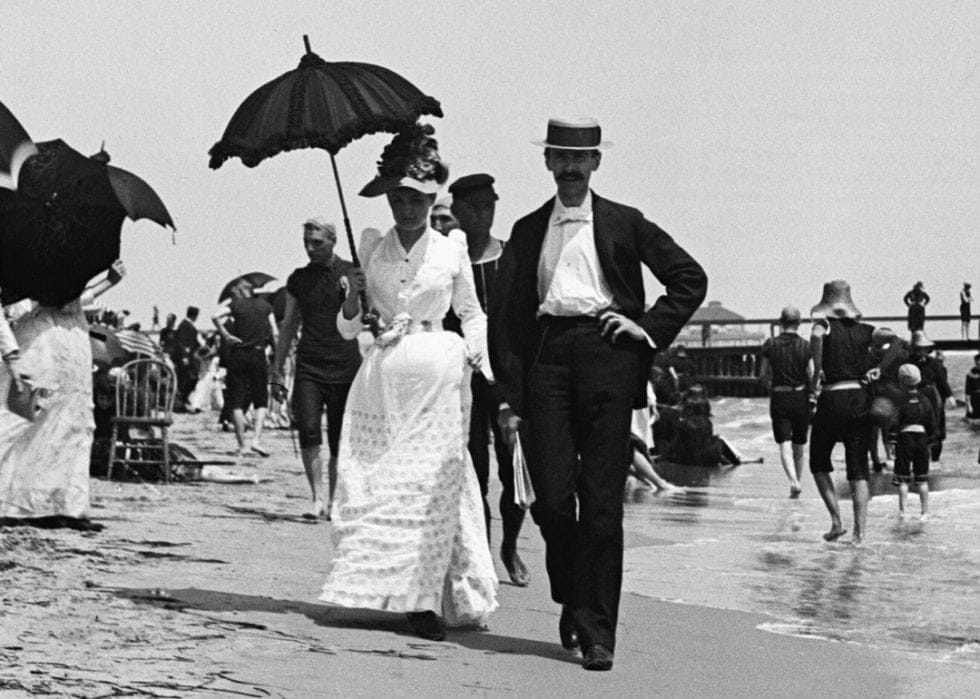
Source: Bettmann/Getty Images
Later, in 1890, it was replaced with a larger, railed boardwalk. In this photo, people can be seen taking a leisurely stroll along the sand at the New Jersey beach, with the boardwalk in the background. Enjoy the unique sight of the Atlantic City boardwalk!
Unveiling a Grand Design - The Capitol Dome
The U.S. Capitol dome was given an awe-inspiring makeover when Philadelphia architect Thomas U. Walter stepped in to design an extension of the building. Walter took up the challenge and created a stunning cast iron dome to replace the original wooden-covered copper structure.
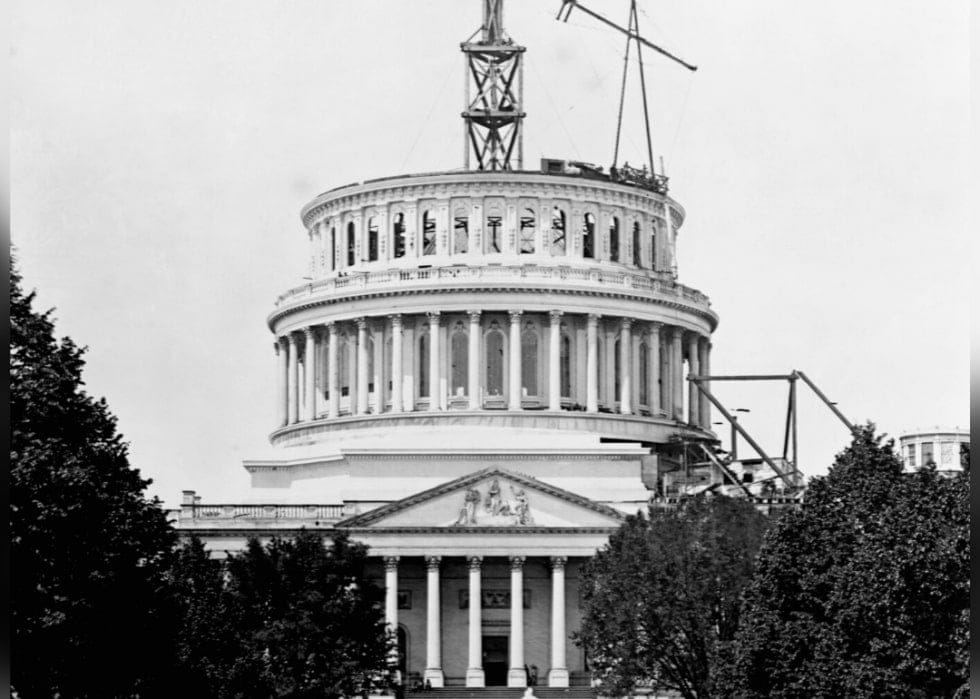
Source: CORBIS/Getty Images
His marvelous craftsmanship brought a new grandeur to the American government building, further complemented by additions to the Capitol over the years. The Capitol dome stands as a testament to Walter’s ingenuity and a reminder of the hard work and dedication of those who helped make it a reality.
Struggle for Freedom: The Haunting Reality of Slavery in 1863
On January 1, 1863, President Abraham Lincoln signed the Emancipation Proclamation, declaring all slaves held in rebel states free. But as this photograph captured a year prior shows, the struggle for freedom did not come without hardships. Taken by Henry P. Moore, the image depicts a group of enslaved people working a sweet potato plantation in South Carolina.
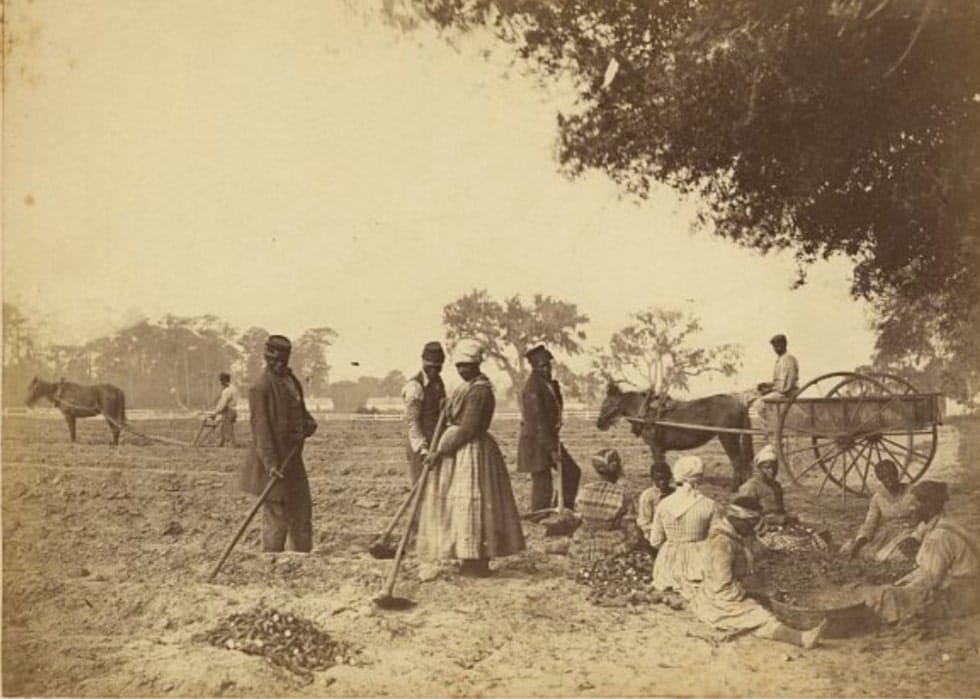
Source: Henry P. Moore/Library of Congress
It is believed that the image was staged with Moore’s intention to make a statement about the condition of slaves in America, even with potential freedom on the horizon. The emotionless faces of the figures in the photograph hint at the struggles that remained, even in a post-slavery society.
Witness the Bustling Commerce of the Port of New Orleans
The bustling commerce of the Port of New Orleans has made it a major point of trade in the United States. Located along the nation’s largest river, the Mississippi, the port plays a crucial role in the transportation of national exports like grain.

Source: Otto Herschan Collection/Hulton Archive/Getty Images
In this picture, the docks of the vibrant port are filled with ships and cargo ready to be sent downstream. The Port of New Orleans is a testament to the importance of the Mississippi River in the American economy. Here, we can take a glimpse into what it was like years ago.
Abraham Lincoln's Failed Attempt to Persuade George B. McClellan
On the 17th of September, 1862, the Battle of Antietam raged on as the bloodiest single-day battle in American history. Union General George B. McClellan and his men had successfully forced Confederate General Robert E. Lee’s troops out of Maryland, thwarting his efforts to invade the north.
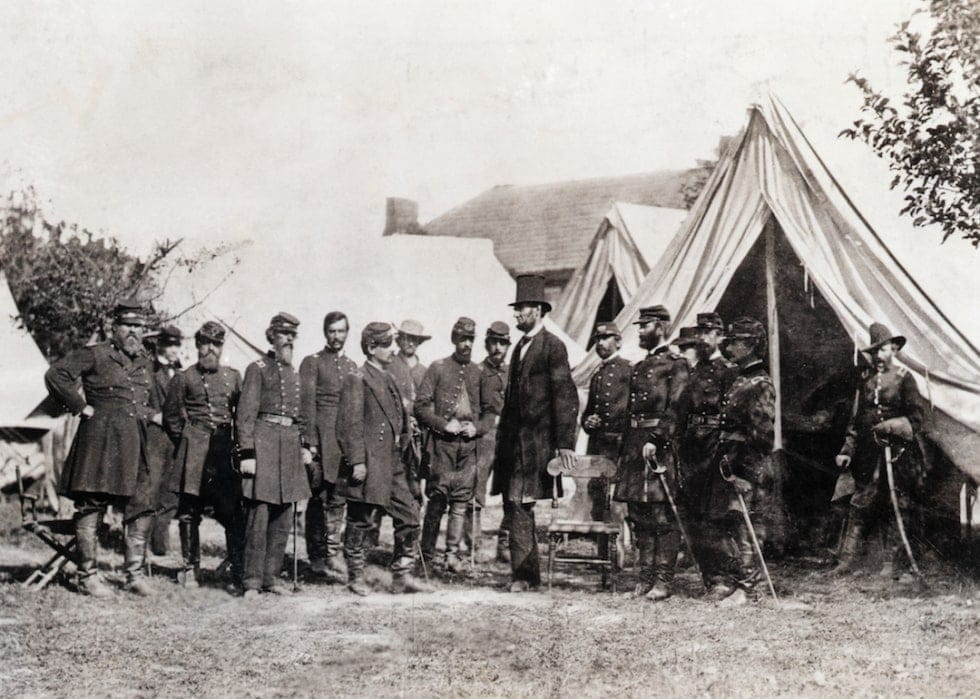
Source: Bettmann/Getty Images
Then-President Abraham Lincoln visited McClellan and his troops at their camp near Sharpsburg, Maryland, hoping to persuade the General to attack Lee’s troops while they had the upper hand. However, McClellan refused to comply, leading to his dismissal from his rank shortly after.
The Destructive March to Sea
In December 1864, Union General William T. Sherman wrote to Army Officer Henry Halleck, proposing a “total war” approach against the Confederacy. To this end, he and 62,000 of his men set out on a destructive march from Atlanta to Savannah, Georgia.
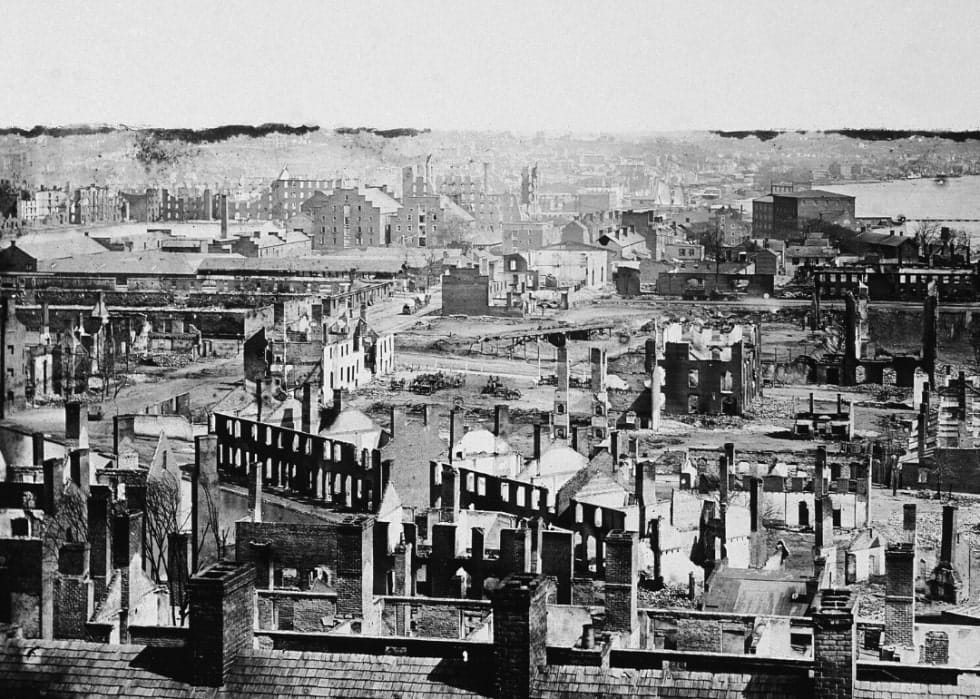
Source: Hulton Archive/Getty Images
In an attempt to scare civilians away from the Confederate cause, Sherman’s troops burned down the homes and barns of anyone who tried to fight them. Though the march was ultimately considered a win for the Union, it left a trail of destruction in its wake, as this image of Richmond demonstrates.
A Nation in Mourning: Abraham Lincoln's Historic Funeral Procession
The nation was mourning on April 14, 1865, when President Abraham Lincoln was assassinated at Ford’s Theatre by stage actor and Confederate sympathizer John Wilkes Booth. To honor the fallen President, a 1,700-mile funeral procession was organized, making it the first to involve travel by train.
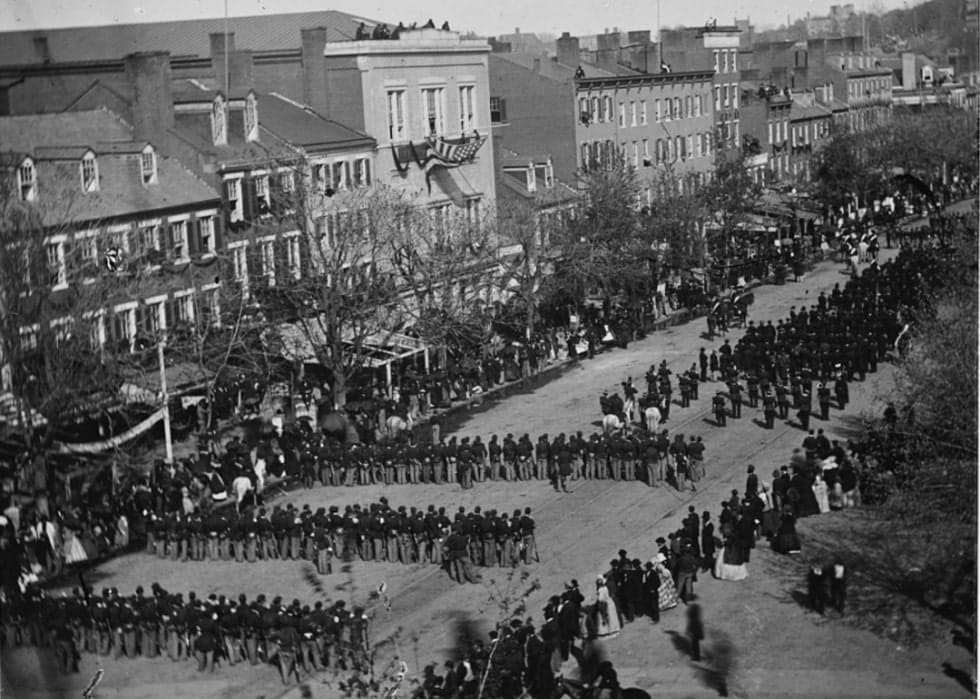
Source: Brady Handy Collection/Library of Congress
The processional route included 400 communities in six different states, as well as Washington D.C. Here, the funeral procession is shown as it moves along Pennsylvania Avenue in the country’s capital, a solemn sight that will long be remembered in history.
Building a Legacy: The Construction of the St. Paul, Minneapolis and Manitoba Railway
Led by the renowned Canadian American railroad executive James J. Hill, St. Paul, Minneapolis, and Manitoba Railway was built to replace St. Paul and Pacific Railroad. This monumental undertaking began in 1879 and was completed in 1893.
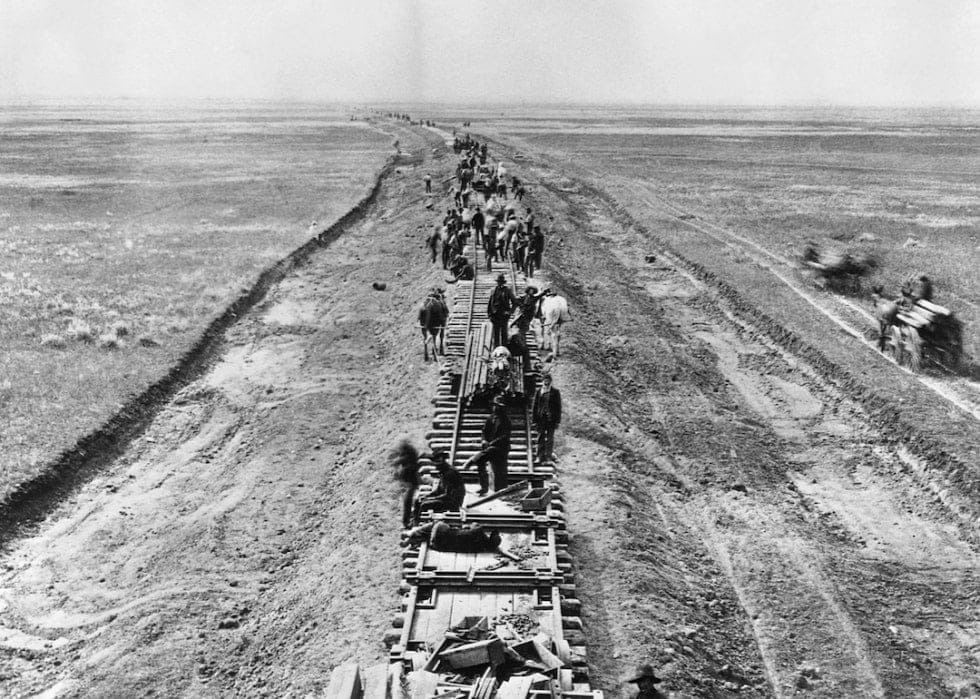
Source: Minnesota Historical Society/CORBIS/Getty Images
The project created one of the largest rail systems in America and the foundation of the Great Northern Railway. This photo highlights the railroad’s construction in Montana, a testament to the legacy left behind by these hardworking individuals. Together, they forged a path that connected St. Paul, Minnesota, to Seattle, Washington.
The Birth of a Boomtown: Helena, Montana
The discovery of gold in Montana in 1864 was the catalyst for a gold rush that saw prospectors flock to the region. The result was an influx of people, leading to the emergence of “boomtowns” or “frontier towns.” Helena, Montana’s capital, was one such boomtown.

Source: Bettmann/Getty Images
With the promise of a better life and the discovery of gold, Helena was transformed from a small settlement to a vibrant, bustling town in the blink of an eye. As the gold rush slowed and the population decreased, Helena remained and is now recognized as a major city in the state.
Uncovering the West: William Henry Jackson's 1872 Expedition
In the 19th century, the exploration of western lands was largely made possible by the crucial role of geological surveying and land mapping. Photographer William Henry Jackson played an essential part in this project.
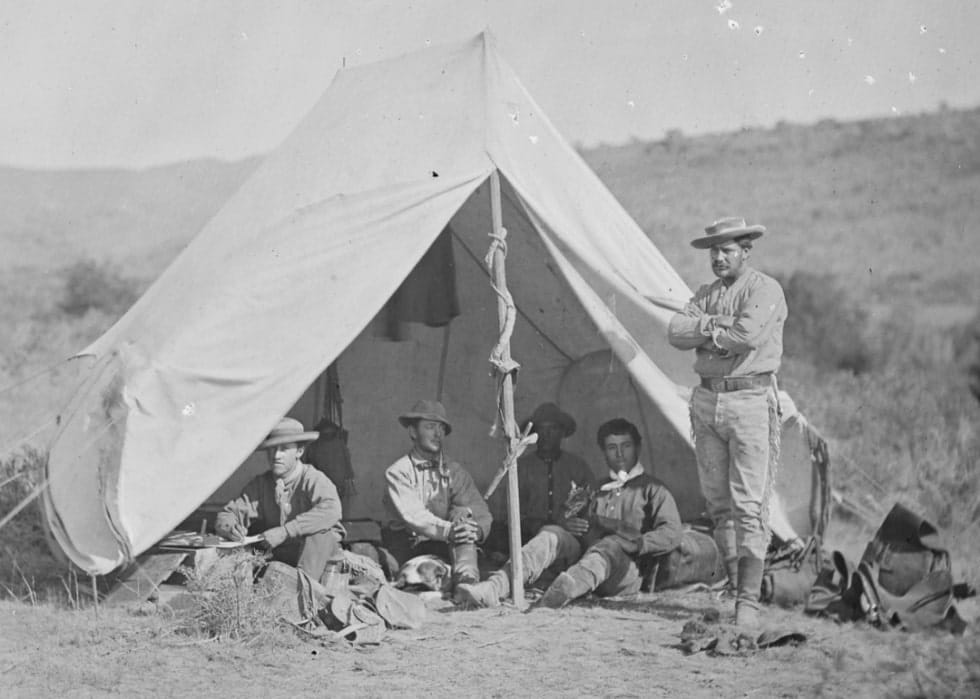
Source: William Henry Jackson/NARA/Wikimedia Commons
Working with the U.S. Government, he spent the late 1800s capturing images of new territories near the Yellowstone River and the Rocky Mountains. This photograph shows the survey team of his 1872 expedition resting by their camp. Jackson’s work provided a documented account of the landscapes, helping uncover the West for generations to come.
An Unforgettable Voyage: The Story of The Annie
In 1872, the U.S. Congress made history by declaring Yellowstone the first-ever national park. This monumental decision was preceded by an expedition the previous year, during which photographer William Henry Jackson captured images of the surveying process.
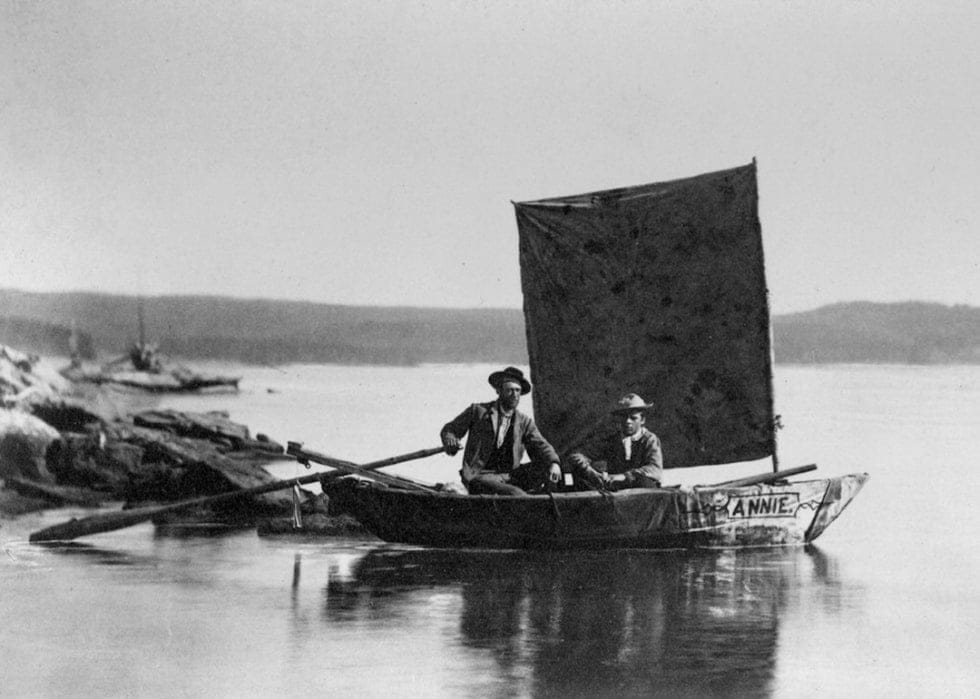
Source: William Henry Jackson/USGS/Wikimedia Commons
One of the spectacular images captured is this remarkable image of the first boat to sail on Yellowstone Lake – The Annie. This iconic photo not only highlights the park’s beauty but also serves as a reminder of an unforgettable voyage that changed the course of history.
Native American Tribes Under Threat
The 19th century saw a huge influx of Americans as they headed west. Unfortunately, the U.S. government attempted to shrink or totally eliminate any Native American tribes they ran into along the way. Native Americans were facing an uphill battle as they strived to protect their land and culture.

Source: Public Domain/Wikimedia Commons
The Red River War of 1874 and 1875 exemplified this, as the government tried to remove the Comanche, Kiowa, Southern Cheyenne, and Arapaho tribes from Texas. This photo shows war prisoners in Florida as the 74 tribal leaders imprisoned by the U.S. government.
The Railroad Revolution: How it Transformed Buffalo Hunting in Dodge City
In 1872, the railroad arrived in Dodge City, Kansas, bringing with it a drastic change in the way buffalo were hunted. Before this, buffalo were mainly killed for their meat and hides. However, the introduction of the railroad initiated a booming buffalo hide industry.
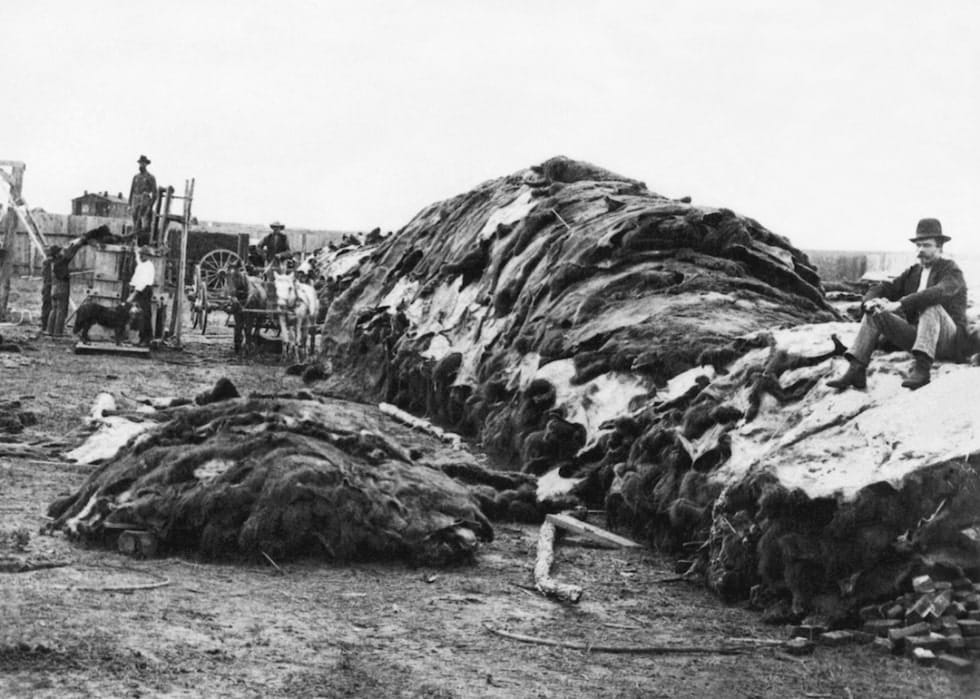
Source: Underwood Archives/Getty Images
This photo captures Charles Rath—the renowned buffalo hunter of the 1800s—sitting atop 40,000 hides in 1878. Rath was the epitome of a successful buffalo hunter, and his story shows how the railroad revolutionized buffalo hunting in Dodge City.
Prospecting for Riches: Placer Mining in Prescott, Arizona Territory
The thrill of finding precious minerals has been a source of excitement for miners for centuries. Placer Mining is a method that uses water to extract heavy minerals such as gold and chromite from the earth.
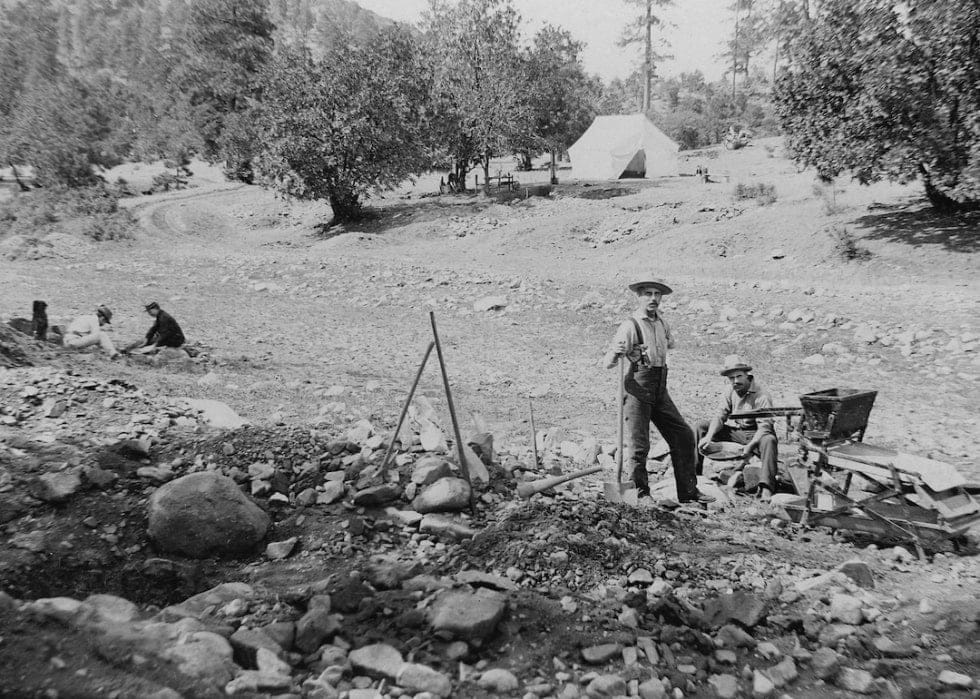
Source: Will R. Beatty/Buyenlarge/Getty Images
Panning, a method used by gold miners in the 19th century, is an early iteration of placer mining. It involves separating the minerals from the soil and other minerals based on their density and gravity. This photo captures a scene of several placer miners in Prescott, Arizona Territory, searching for the hidden riches that the land holds.
A Glimpse Into the Past: The Northwestern Express Stage and Transportation Co.
The 19th century was a time of great progress and change, especially in the area of transportation. Though the introduction of railroads provided a new and faster mode of travel, stagecoaches still remained popular, particularly in rural areas.

Source: Minnesota Historical Society/CORBIS/Getty Images
The Northwestern Express Stage and Transportation Company was a major stagecoach station in South Dakota where passengers could rest, eat and swap out their horses every few hours. This photo captures a coach as it prepares to start its journey, giving us a glimpse into the past of stagecoach travel.
A Landscape of Pain and Loss: The Wounded Knee Massacre
The Lakota Pine Ridge Indian Reservation in South Dakota is a landscape of pain and loss. In 1890, the conflict between the U.S. military and the Native Americans reached its peak with the Wounded Knee Massacre.

Source: John C.H. Grabill/Getty Images
250 Native Americans were killed in this tragic event, marking the final clash between the U.S. government and the Plains Indians. This image captures the atmosphere of the Lakota village on the Pine Ridge Reservation, bringing to mind the heartbreak of a past tragedy.
The Thrill of the Chase: The Oklahoma Land Run
On September 16th, 1893, the Oklahoma Land Run saw around 100,000 settlers take part in a landrace. With the promise of 1.9 million acres of Native American territory opened for western settlement, land-hopeful settlers flooded in from all directions.
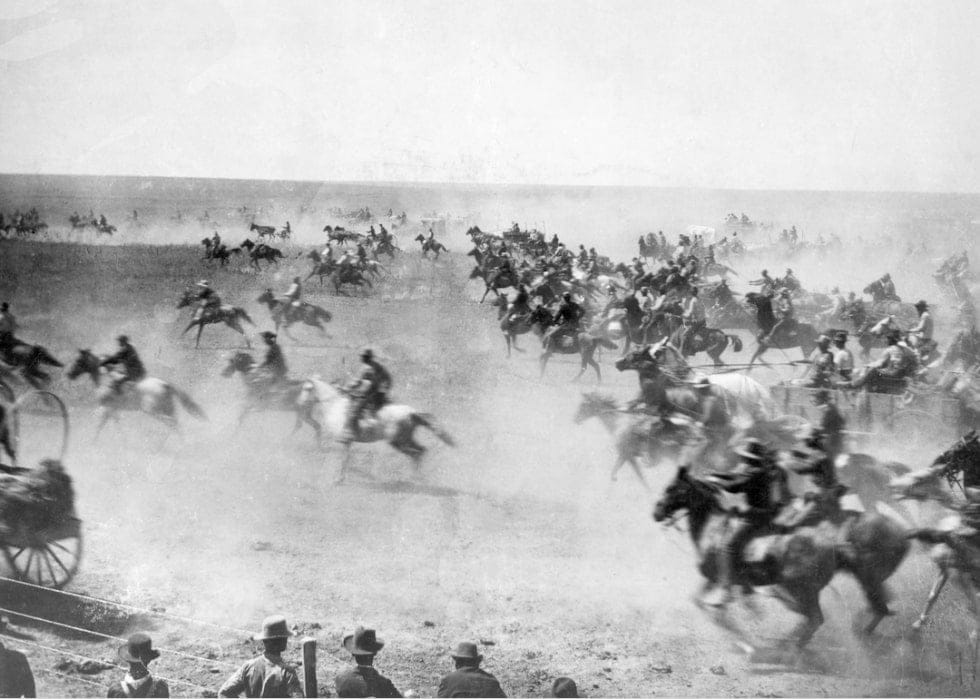
Source: Bettmann/Getty Images
They chased the dream of claiming the land for themselves and their families by train, horse, foot, and wagon. Unfortunately, with only 42,000 parcels of land available, most settlers came out of the race empty-handed. Despite the outcome, the Oklahoma Land Run of 1893 remains a remarkable moment in American history.
Uncovering the Strength of the Great American Prairie: The Sod House
In the 1800s, with the spread of homesteaders across the Great American Prairie, one of the most difficult challenges was finding suitable materials to work. With limited access to wood and stone, the prairie folk turned to nature and built their homes using sod.
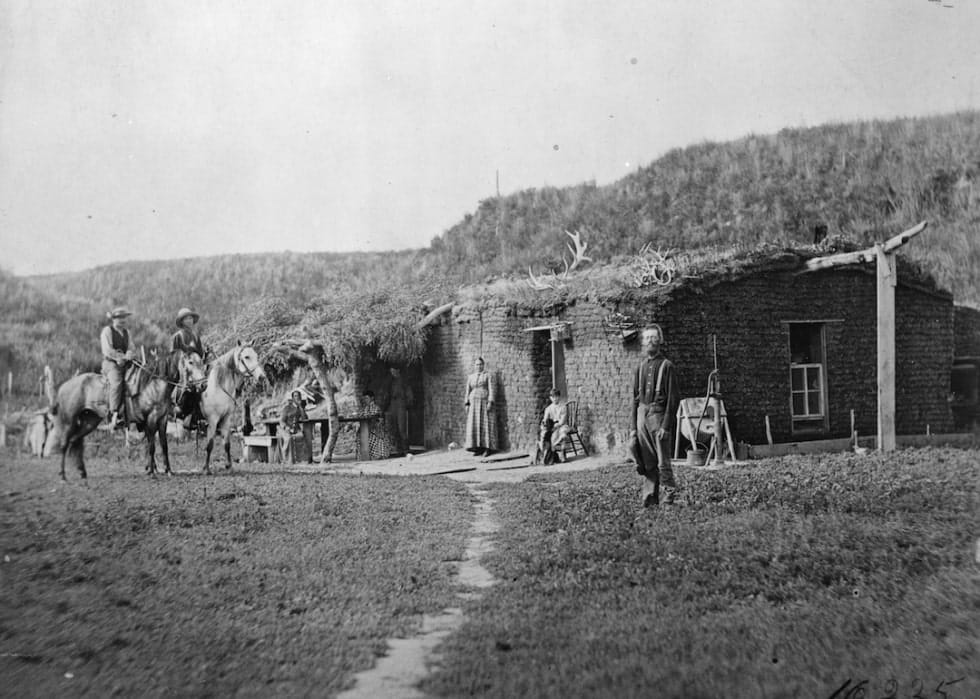
Source: PhotoQuest/Getty Images
Sod is a thick layer of grass and soil with its roots intact. This photo shows a family standing in front of their sod house in Nebraska, demonstrating the remarkable strength of the prairie land and the resourcefulness of its inhabitants.
Michigan's Logging Industry Built on the Back of Sleds
In the 1800s, Michigan’s vast landscapes and abundance of pine and hardwood trees made it a key player in the lumber industry. By 1880, it had become the largest timber producer in the nation.
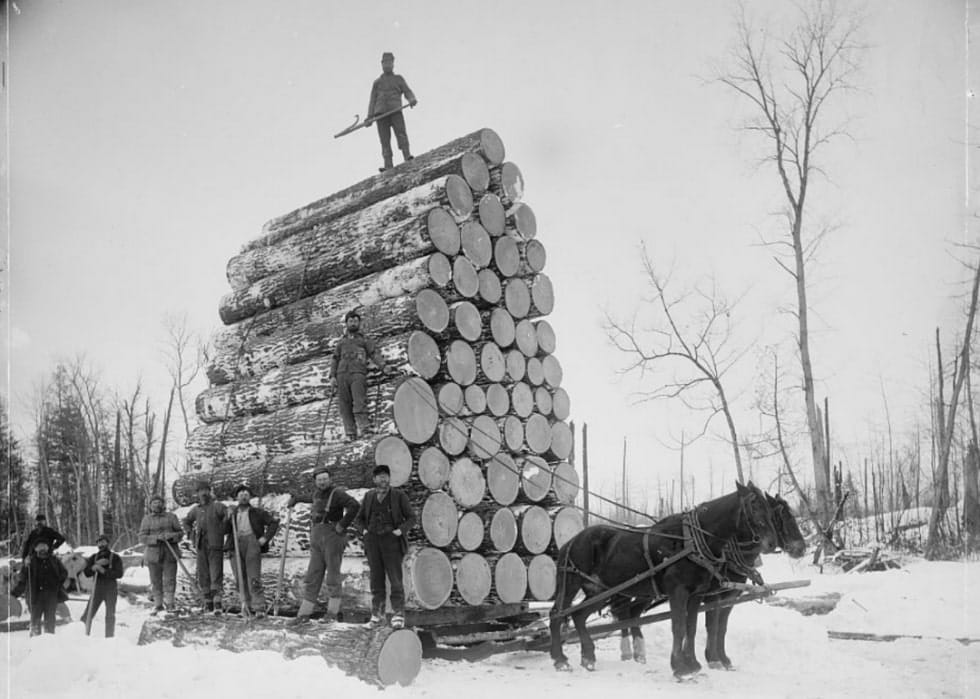
Source: Detroit Publishing Company/Library of Congress
The logging process relied heavily on sleds, which were instrumental in moving logs too massive to drag from the forest. This photo captures the hard work of the men employing sleds to transport logs on man-made, ice-covered roads. Michigan’s logging industry was built on the back of sleds!
From Boom to Bust: The Rise and Fall of the Columbia River Salmon Industry
The 19th century saw a boom in America’s industry, with many regions quickly developing business models based on their unique natural resources. In the late 1800s, salmon canning was the fastest-growing industry along the Columbia River in Oregon, with 39 canneries in the 1880s.

Source: Archive Photos/Getty Images
This photo captures the beginnings of the industry’s decline, taken at an Astoria, Oregon canning establishment in 1890. Unfortunately, overfishing in preceding years caused the industry to slow, and by 1980, the last cannery along the Columbia River had closed its doors.
Uncovering the Brilliance of Thomas Edison: An Iconic Photograph
This iconic photograph of Thomas Edison captures the genius of the man remembered for inventing the incandescent lightbulb. The prolific inventor was credited with an impressive 1,093 patents in his lifetime.
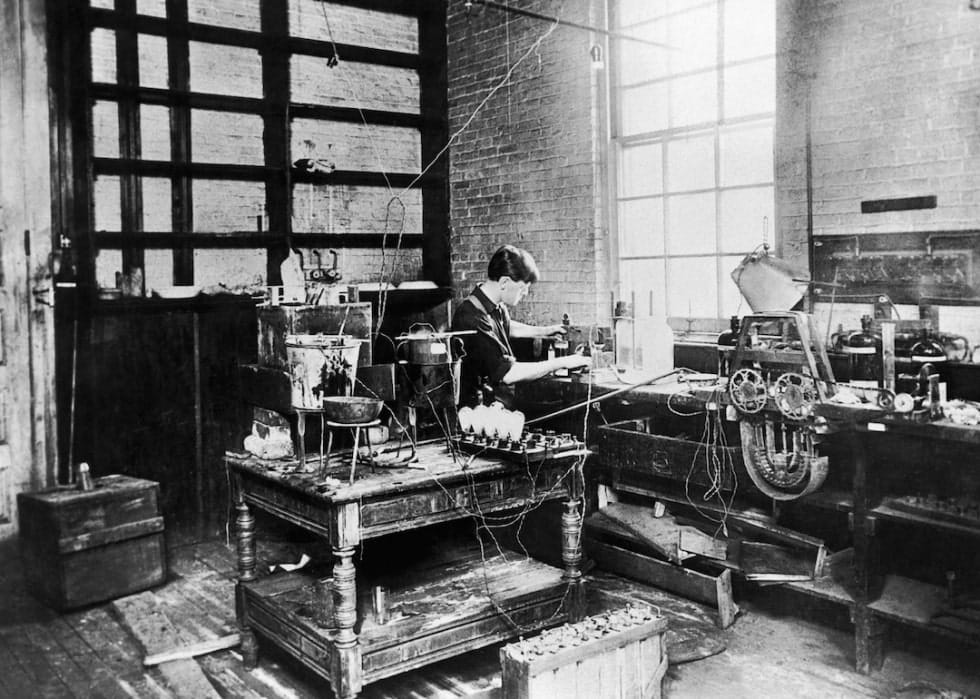
Source: Keystone-France/Gamma-Keystone/Getty Images
This photograph shows him hard at work in his New Jersey laboratory. After more than a year of tinkering and testing, Edison perfected the lightbulb in 1879. His genius and determination revolutionized the world and remain an inspiration to this day.
An Iconic Achievement: The Construction of The Brooklyn Bridge
The construction of The Brooklyn Bridge, an iconic part of the New York skyline, was an incredible achievement in the 19th century. Based on the designs of German-born civil engineer John Augustus Roebling, the 14-year-long project linked Manhattan and Brooklyn over the East River with the first-ever steel suspension bridge.
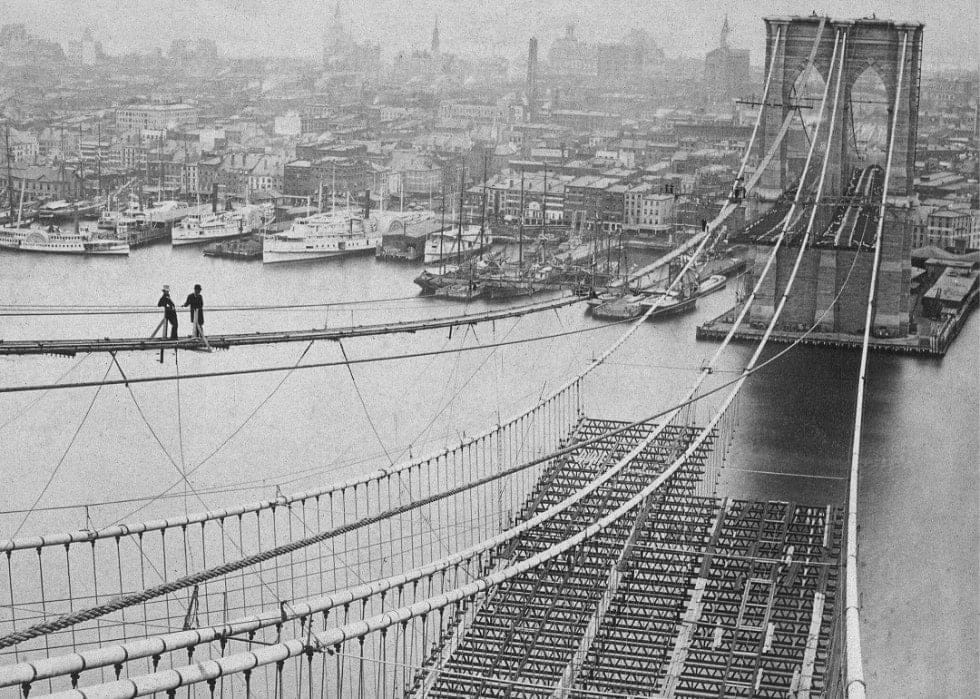
Source: Photo12/Universal Images Group/Getty Images
It took 600 workers to complete the project, costing more than $320 million in today’s dollars. As this photo shows, the bridge was nearing its completion in 1883 and has now, in modern times, become a symbol of New York City’s strength and resilience.
A Glimpse of San Francisco's Rich History: The Electric Streetcar
The electric streetcar was an innovation that revolutionized transportation in San Francisco during the 1890s. This engineering marvel was a massive upgrade from the horse-drawn wagons and cable cars of the time.
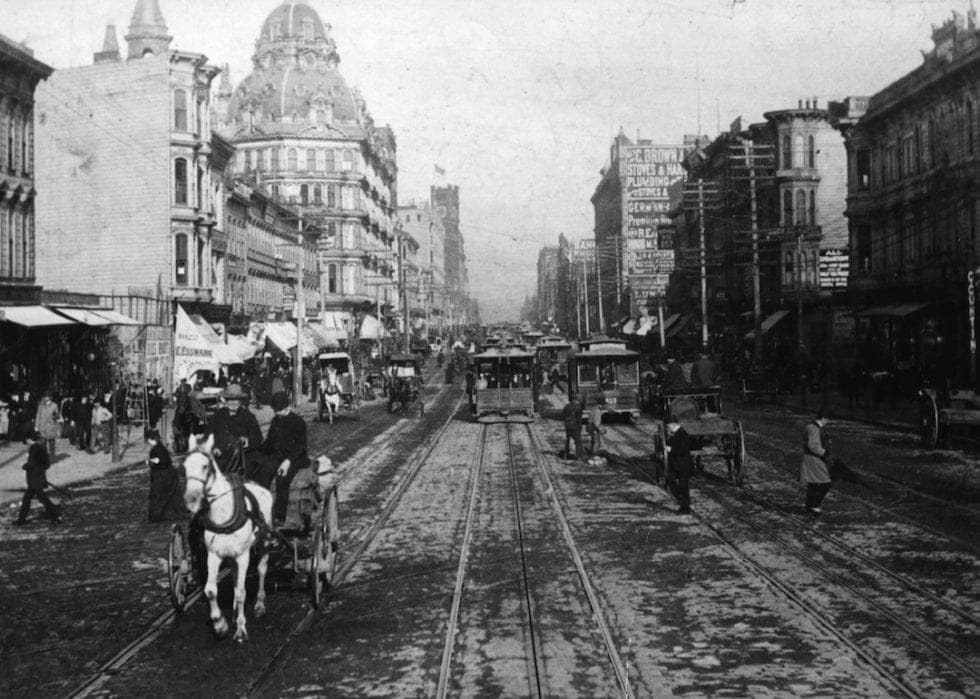
Source: Hulton Archive/Getty Images
The Market Street line was the beginning of a journey that took passengers through the Mission District and Glen Park to the Colma cemeteries. This photo captures a glimpse of San Francisco’s incredible past when the electric streetcar was the main form of transportation.
The Architectural Genius of Frédéric-Auguste Bartholdi: The Father of the Statue of Liberty
Frédéric-Auguste Bartholdi was a French sculptor widely renowned for designing the iconic Statue of Liberty. His incredible work was inspired by Édouard de Laboulaye’s suggestion to create a monument to symbolize freedom and democracy in the post-Civil War age.
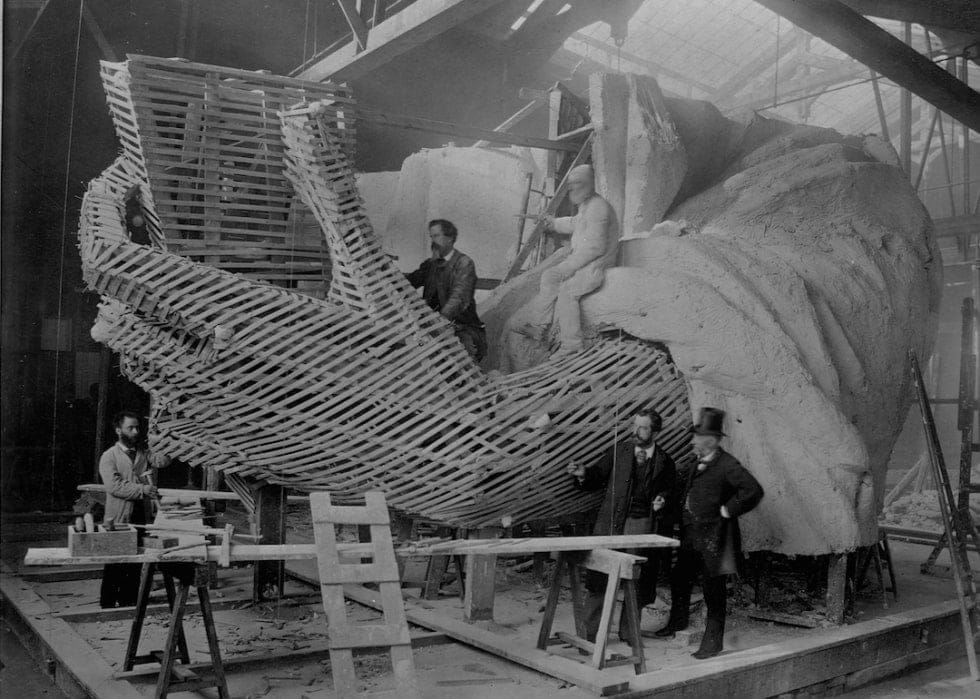
Source: Library of Congress/Corbis/VCG /Getty Images
In this image, Bartholdi is working on the left hand of his large-scale statue in a Parisian warehouse. His work was instrumental in creating a symbol of American liberty that still stands proud in New York.
Breaking the Cycle: The Mott Street Industrial School
In the 19th century, European immigration caused the rise of slum communities, leaving those with limited resources to fend for themselves without employment and no protective legislation. To support these communities, the Children’s Aid Society built a series of industrial schools between the 1880s and 1890s to provide children with education and moral guidance.
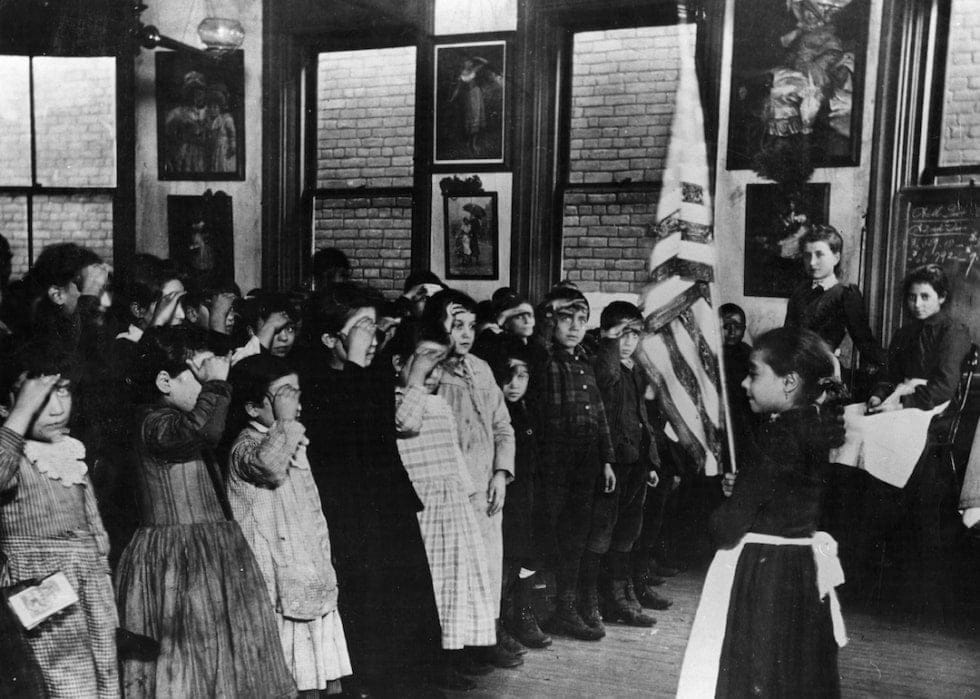
Source: Jacob A. Riis/Getty Images
This photo shows children from the Mott Street Industrial School in New York taking the Oath of Allegiance. The spectacular image was captured with the then-new technique of flash photography. These schools aimed to break the cycle of poverty and open up a brighter future for the children of slum communities.
The Original Chicago Champions: The Chicago
From Lakeside Park to the beloved Wrigley Field, this team of star players served as the predecessors to the two iconic Chicago baseball teams we know and love today: the Chicago Cubs and the Chicago White Sox.
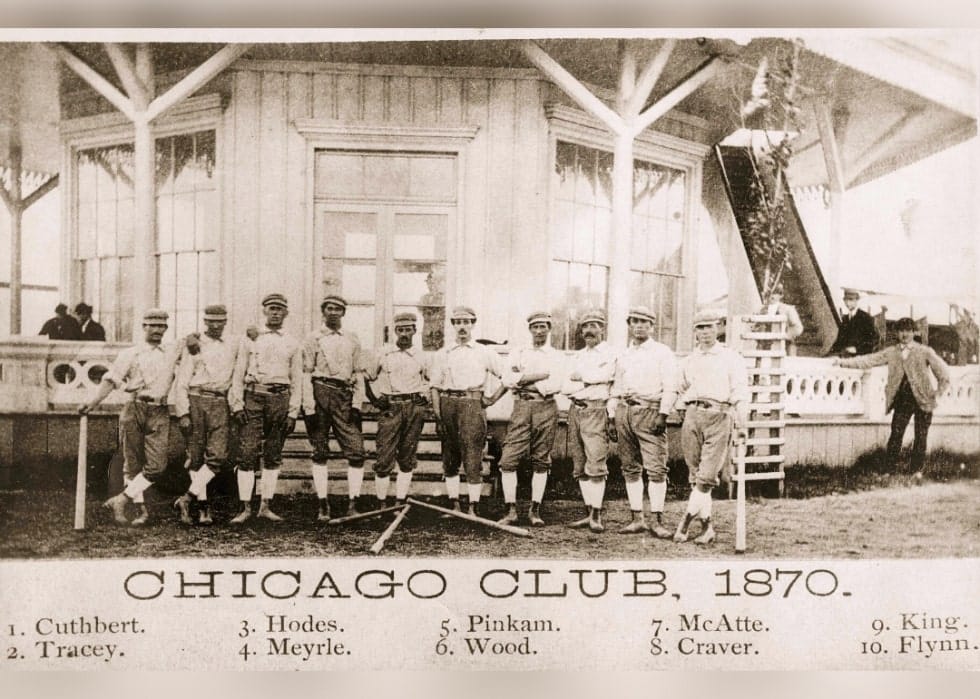
Source: Transcendental Graphics/Getty Images
This particular image shows the original White Stockings Chicago baseball team, depicting some of the greats of their time, including William Craver and Levi Meyerle, two of the original members of the White Stockings. It’s a true glimpse into the roots of Chicago baseball!
Spectacular Spectacle: The Ringling Brothers Circus Parade
The streets of Black River Falls, Wisconsin came alive with thrilling excitement in the late 1880s when families eagerly awaited the arrival of the Ringling Brothers Circus. As the parade of acrobats, exotic animals, and other performers marched down Main Street, the townspeople lined up to watch in awe.
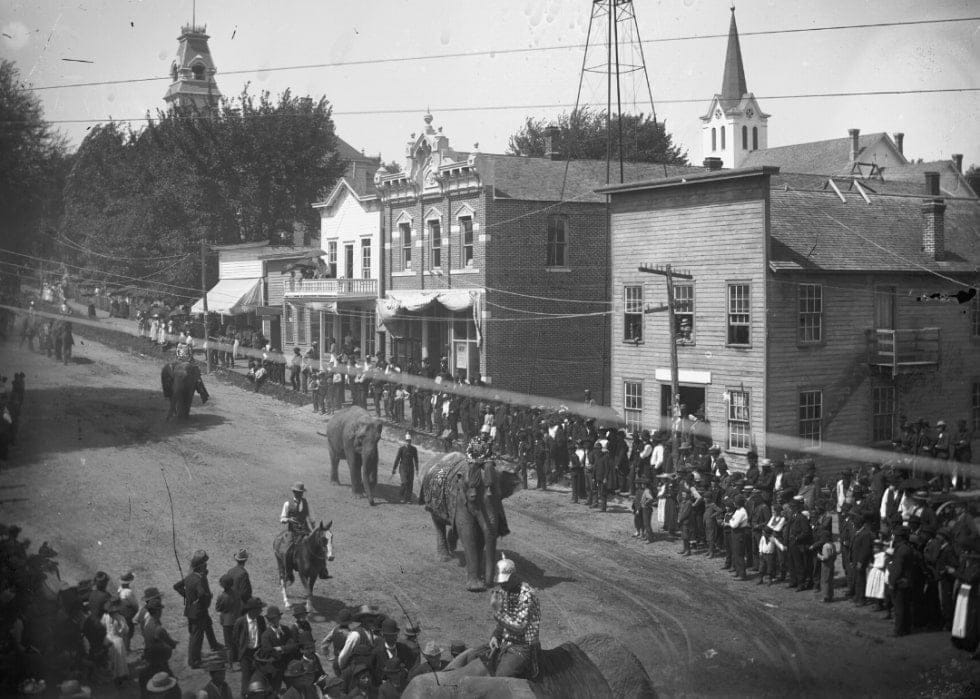
Source: Charles Van Schaick/Wisconsin Historical Society/Getty Images
This was a sight to behold. The procession included several majestic elephants that were sure to evoke wonder in the hearts of all who beheld them. On Circus Day, the town was abuzz with joy and anticipation, making for a spectacular spectacle.
Ready, Set, Ride! A Look into the History of Cycling Clubs
The history of cycling clubs dates back to when Americans had fewer transportation options than we do today. Before the invention of cars and buses, cycling was the go-to means of getting around.
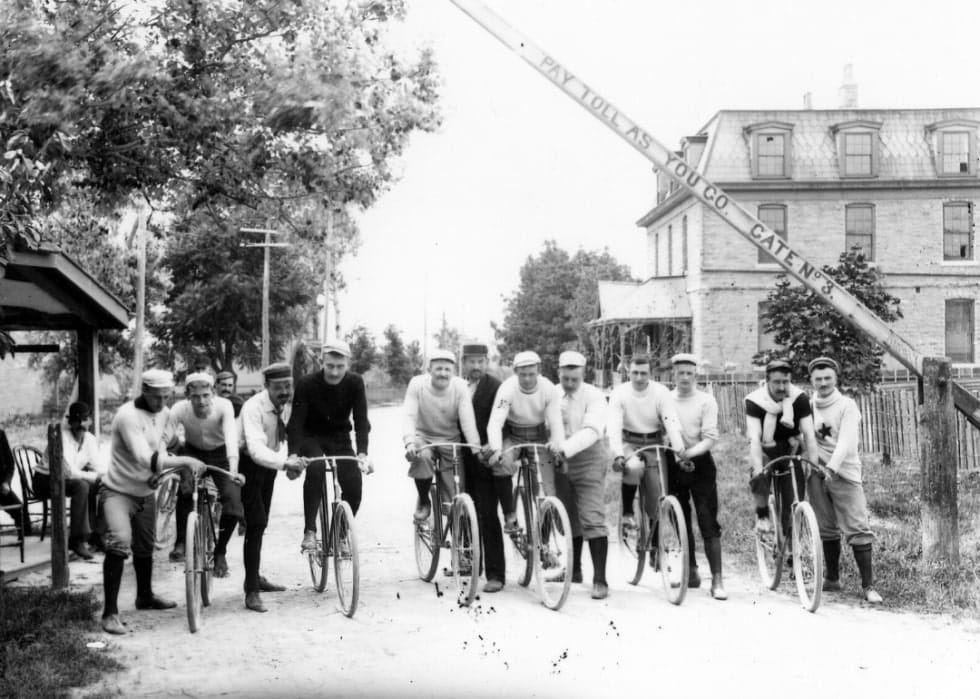
Source: Cincinnati Museum Center/Getty Images
Cycling brought convenience and enjoyment, so much so that it inspired the formation of bicycle clubs in communities across the country. This 1892 photograph of the Brighton Bicycle Club from Cincinnati shows members preparing to race, embodying the spirit of adventure and exploration that cycling clubs strive to promote.
A Century of Fun: Steel Pier, America's First Waterfront Amusement Park
Atlantic City was the site of the first boardwalk in America, so it’s no surprise that it also became the home of the nation’s first waterfront amusement park. Steel Pier opened in 1898 and quickly gained popularity with locals and tourists alike.

Source: Bettmann/Getty Images
Throughout the years, it hosted numerous milestones, such as the first Miss America Pageant in 1921 and a performance by Frank Sinatra in 1950. This photo, taken in 1899, just a year after its construction, shows Steel Pier at the center of a lively beach – a truly magnificent glimpse into American history.
The 1886 Anarchists' Riot: Remembering a Day of Protest in Chicago
Once again, the citizens of Chicago stood up for their rights in April and May of 1886. Workers, unionists, socialists, and anarchists joined forces, taking to the streets to demand a change nationwide – they called for an eight-hour workday.
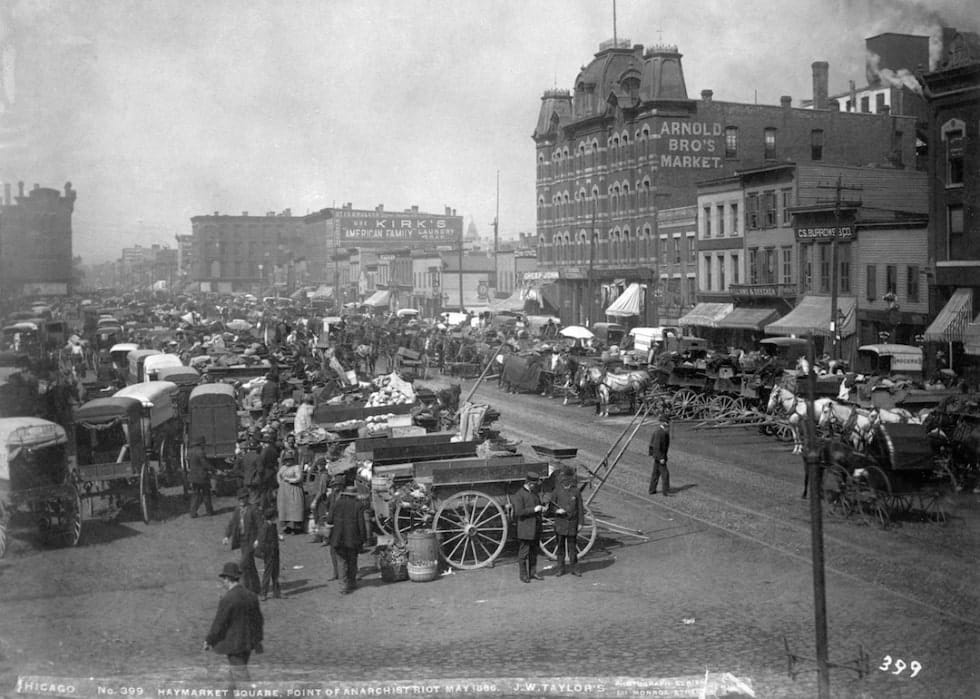
Source: Chicago History Museum/Getty Images
Many days of striking and protest meetings took place, and on May 4th, a peaceful demonstration on Des Plaines Street ended in a violent confrontation between officers and citizens. Sadly, eight law enforcement officials perished, and many more civilians were injured and killed. The image of the Randolph Street Market in Chicago serves as a reminder of this day of protest and its tragic consequences.
